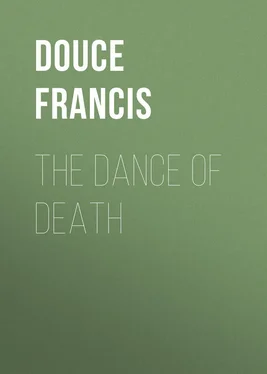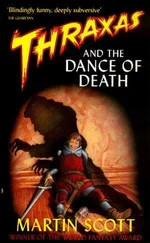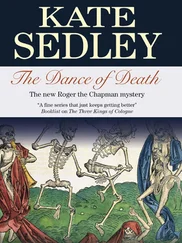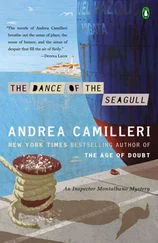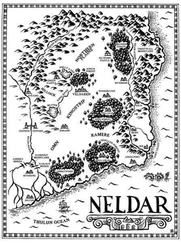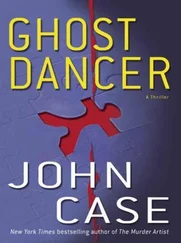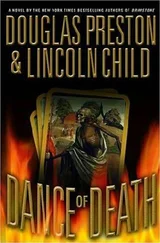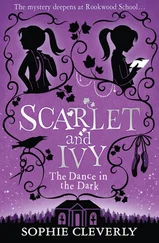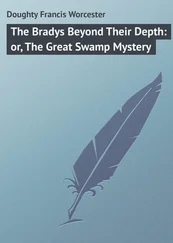Francis Douce - The Dance of Death
Здесь есть возможность читать онлайн «Francis Douce - The Dance of Death» — ознакомительный отрывок электронной книги совершенно бесплатно, а после прочтения отрывка купить полную версию. В некоторых случаях можно слушать аудио, скачать через торрент в формате fb2 и присутствует краткое содержание. Жанр: foreign_antique, foreign_prose, на английском языке. Описание произведения, (предисловие) а так же отзывы посетителей доступны на портале библиотеки ЛибКат.
- Название:The Dance of Death
- Автор:
- Жанр:
- Год:неизвестен
- ISBN:нет данных
- Рейтинг книги:5 / 5. Голосов: 1
-
Избранное:Добавить в избранное
- Отзывы:
-
Ваша оценка:
- 100
- 1
- 2
- 3
- 4
- 5
The Dance of Death: краткое содержание, описание и аннотация
Предлагаем к чтению аннотацию, описание, краткое содержание или предисловие (зависит от того, что написал сам автор книги «The Dance of Death»). Если вы не нашли необходимую информацию о книге — напишите в комментариях, мы постараемся отыскать её.
The Dance of Death — читать онлайн ознакомительный отрывок
Ниже представлен текст книги, разбитый по страницам. Система сохранения места последней прочитанной страницы, позволяет с удобством читать онлайн бесплатно книгу «The Dance of Death», без необходимости каждый раз заново искать на чём Вы остановились. Поставьте закладку, и сможете в любой момент перейти на страницу, на которой закончили чтение.
Интервал:
Закладка:
It must not be left unnoticed that M. De Bure, in his account of the edition of the Danse Macabre, printed by Marchant, 1486, has stated that the verses have been attributed to Michel Marot; but the book is dated before Marot was born. 47 47 Bibl. Instruc. No. 3109.
Again, – As to the connexion between the word Macaber with the Dance itself.
In the course of the thirteenth century there appeared a French metrical work under the name of “Li trois Mors et li trois Vis,” i. e. Les trois Morts et les trois Vifs. In the noble library of the Duke de la Valliere, there were three apparently coeval manuscripts of it, differing, however, from each other, but furnishing the names of two authors, Baudouin de Condé and Nicolas de Marginal. 48 48 Catal. La Valliere No. 2736 – 22.
These poems relate that three noble youths when hunting in a forest were intercepted by the like number of hideous spectres or images of Death, from whom they received a terrific lecture on the vanity of human grandeur. A very early, and perhaps the earliest, allusion to this vision, seems to occur in a painting by Andrew Orgagna in the Campo Santo at Pisa; and although it varies a little from the description in the above-mentioned poems, the story is evidently the same. The painter has introduced three young men on horseback with coronets on their caps, and who are attended by several domestics whilst pursuing the amusement of hawking. They arrive at the cell of Saint Macarius an Egyptian Anachorite, who with one hand presents to them a label with this inscription, as well as it can be made out, “Se nostra mente fia ben morta tenendo risa qui la vista affitta la vana gloria ci sara sconfitta la superbia e sara da morte;” and with the other points to three open coffins, in which are a skeleton and two dead bodies, one of them a king.
A similar vision, but not immediately connected with the present subject, and hitherto unnoticed, occurs at the end of the Latin verses ascribed to Macaber, in Goldasti’s edition of the Speculum omnium statuum à Roderico Zamorensi. Three persons appear to a hermit, whose name is not mentioned, in his sleep. The first is described as a man in a regal habit; the second as a civilian, and the third as a beautiful female decorated with gold and jewels. Whilst these persons are vainly boasting of their respective conditions, they are encountered by three horrible spectres in the shape of dead human bodies covered with worms, who very severely reprove them for their arrogance. This is evidently another version of the “Trois mors et trois vifs” in the text, but whether it be older or otherwise cannot easily be ascertained. It is composed in alternate rhymes, in the manner, and probably by the author of Philibert or Fulbert’s vision of the dispute between the soul and the body, a work ascribed to S. Bernard, and sometimes to Walter de Mapes. There are translations of it both in French and English.
For the mention of S. Macarius as the hermit in this painting by Orgagna, we are indebted to Vasari in his life of that artist; and he had, no doubt, possessed himself of some traditionary information on the subject of it. He further informs us, that the person on horseback who is stopping his nostrils, is intended for Andrea Uguzzione della fagivola. Above is a black and hideous figure of Death mowing down with his scythe all ranks and conditions of men. Vasari adds that Orgagna had crowded his picture with a great many inscriptions, most of which were obliterated by time. From one of them which he has preserved in his work, as addressed to some aged cripples, it should appear that, as in the Macaber Dance, Death apostrophizes the several characters. 49 49 Vasari vite de Pittori, tom. i. p. 183, edit. 1568, 4to.
Baldinucci, in his account of Orgagna, mentions this painting and the story of the Three Kings and Saint Macarius. 50 50 Baldinucci Disegno, ii. 65.
Morona, likewise, in his Pisa illustrata, adopts the name of Macarius when describing the same subject. The figures in the picture are all portraits, and their names may be seen, but with some variation as to description, both in Vasari and Morona. 51 51 Morona Pisa Illustrata, i. 359.
Now the story of Les trois mors et les trois vifs , was prefixed to the painting of the Macaber Dance in the church-yard of the Innocents at Paris, and had also been sculptured over the portal of the church, by order of the Duke de Berry in 1408. 52 52 Du Breul Antiq. de Paris, 1612, 4to. p. 834, where the verses that accompany the sculpture are given. See likewise Sandrart Acad. Picturæ, p. 101.
It is found in numerous manuscript copies of Horæ and other service books prefixed to the burial office. All the printed editions of the Macaber Dance contain it, but with some variation, the figure of Saint Macarius in his cell not being always introduced. It occurs in many of the printed service books, and in some of our own for the use of Salisbury. The earliest wood engraving of it is in the black book of the “15 signa Judicii,” where two of the young men are running away to avoid the three deaths, or skeletons, one of whom is rising from a grave. It is copied in Bibliotheca Spenceriana, vol. i. p. xxx.
From the preceding statement then there is every reason to infer that the name of Macaber, so frequently, and without authority, applied to an unknown German poet, really belongs to the Saint, and that his name has undergone a slight and obvious corruption. The word Macabre is found only in French authorities, and the Saint’s name, which, in the modern orthography of that language, is Macaire , would, in many ancient manuscripts, be written Macabre instead of Macaure , the letter b being substituted for that of u from the caprice, ignorance, or carelessness of the transcribers.
As no German copy of the verses describing the painting can, with any degree of certainty, be regarded as the original, we must substitute the Latin text, which may, perhaps, have an equal claim to originality. The author, at the beginning, has an address to the spectators, in which he tells them that the painting is called the Dance of Macaber. There is an end, therefore, of the name of Macaber, as the author of the verses, leaving it only as applicable to the painting, and almost, if not altogether confirmatory of the preceding conjecture. The French version, from which Lydgate made his translation, nearly agrees with the Latin. Lydgate, however, in the above address, has thought fit to use the word translator instead of author , but this is of no moment, any more than the words Machabrée the Doctour , which, not being in the French text, are most likely an interpolation. He likewise calls the work the daunce ; and it may, once for all, be remarked, that scarcely any two versions of it will be found to correspond in all respects, every new editor assuming fresh liberties, according to the usual practice in former times.
The ancient paintings of the Macaber Dance next demand our attention. Of these, the oldest on record was that of Minden in Westphalia, with the date 1383, and mentioned by Fabricius in his Biblioth. med. et infimæ ætatis, tom. v. p. 2. It is to be wished that this statement had been accompanied with some authority; but the whole of the article is extremely careless and inaccurate.
The earliest, of which the date has been satisfactorily defined, was that in the church-yard of the Innocents at Paris, and which has been already mentioned as having been painted in 1434.
In the cloister of the church of the Sainte Chapelle at Dijon the Macaber Dance was painted by an artist whose name was Masonçelle. It had disappeared and was forgotten a long time ago, but its existence was discovered in the archives of the department by Mons. Boudot, an ardent investigator of the manners and customs of the middle ages. The date ascribed to this painting is 1436. The above church was destroyed in the revolution, previously to which another Macaber Dance existed in the church of Notre Dame in the above city. This was not a painting on the walls, but a piece of white embroidery on a black piece of stuff about two feet in height and very long. It was placed over the stalls in the choir on grand funeral ceremonies, and was also carried off with the other church moveables, in the abovementioned revolution. 53 53 Peignot Recherches, xxxvii-xxxix.
Similar exhibitions, no doubt, prevailed in other places.
Интервал:
Закладка:
Похожие книги на «The Dance of Death»
Представляем Вашему вниманию похожие книги на «The Dance of Death» списком для выбора. Мы отобрали схожую по названию и смыслу литературу в надежде предоставить читателям больше вариантов отыскать новые, интересные, ещё непрочитанные произведения.
Обсуждение, отзывы о книге «The Dance of Death» и просто собственные мнения читателей. Оставьте ваши комментарии, напишите, что Вы думаете о произведении, его смысле или главных героях. Укажите что конкретно понравилось, а что нет, и почему Вы так считаете.
